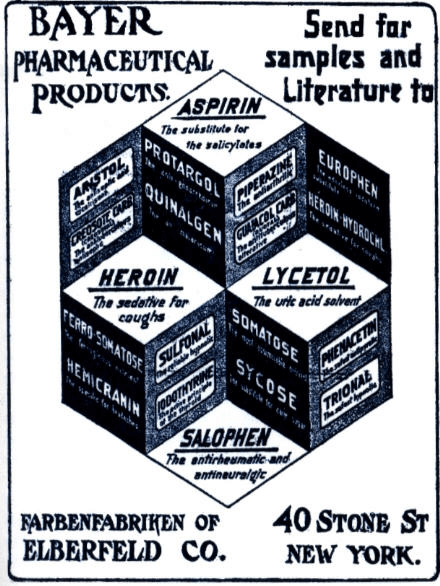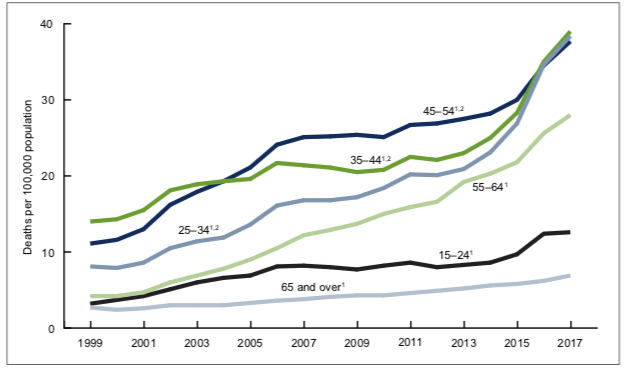6 Things You Need to Know About the Opioid Epidemic
In January 2019, the National Safety Council announced - for the first time in history - that the odds of dying as a result of an opioid overdose now exceed the odds of being killed in a vehicle crash. As the rest of 2019 has unfolded, stories that revolve around the opioid epidemic have been a steady part of the news cycle. In August, Oklahoma became the first state to require financial reparations from Johnson & Johnson, while drug manufacturer Purdue filed for bankruptcy as part of a $10 billion agreement to settle opioid-related lawsuits.
But what exactly are opioids and how did we reach this boiling point? Also, what exactly do you need to know about opioids in order to understand more about the crisis, which is estimated to have cost the U.S. economy $631 billion, according to a new study from the Society of Actuaries?
First things first, opioids are a class of drugs that have highly addictive, pain-relieving properties, and they are derived from the milky latex found in the seedpods of opium poppy plants. The earliest reference to the cultivation of opium is in 3,400 B.C., when the Mesopotamian civilization began using them for medicinal purposes.
As the smuggling of opium increased along the Silk Road during the 14th Century, recreational use became more prevalent. But perhaps what contributed the most to its widespread use were the Opium Wars, which forced China to legalize the opium trade in 1858.

In the United States, opioids first surfaced around the 1800s. While the Gold Rush in 1849 brought an influx of Chinese immigrants who introduced the West Coast to opium, morphine – a derivative of opium – had already begun making waves across the country, reaching its peak popularity during the Civil War. Veterans had developed a drug addiction problem, often called “the army disease,” from using morphine to treat battle wounds.
Since then, different waves and forms of opioid abuse have emerged in the United States.
FACT: HEROIN IS AN OPIOID.
And so are Fentanyl, OxyContin, Vicodin, Methadone and Codeine.

Heroin is made from morphine. In fact, when heroin was first introduced in the early 1900s, it was marketed as a cough suppressant and as the “non-addictive” substitute for morphine. The irony is that it had even more addictive properties. The number of users increased so much that heroin was banned in 1914.
However, heroin's popularity experienced a resurgence. After the 1900s, another wave of heroin abuse - often associated with the “War on Drugs” era - hit in the 1970s. As a sometimes cheaper alternative to prescription opioids, heroin has also made a comeback in today's epidemic.
While the United States has always had a problem with opioids, the severity of the current crisis - and the deaths associated with it - distinguish it from other eras of drug use.
FACT: DRUG OVERDOSE IS THE LEADING CAUSE OF ACCIDENTAL DEATH IN THE UNITED STATES. AND OPIOIDS ARE THE MOST COMMON DRUG INVOLVED IN AN OVERDOSE DEATH.
The opioid epidemic picked up steam in the 1990s when a number of industries allowed for the overprescribing of drugs aimed at the treatment of pain. As the volume of prescriptions increased, addiction rates and the number of overdose deaths did, too – to the point where opioid overdose deaths in 2017 were six times higher than in 1999.
In 2017, more than 70,000 people died from drug overdoses. Of those deaths, almost 68 percent involved a prescription or an illicit opioid.
FACT: DENTISTS ARE THE LEADING PRESCRIBER OF OPIOIDS FOR ADOLESCENTS AND YOUNG ADULTS.
An estimated 31 percent of teens and young adults receive their first opioid prescription from a dental provider. Most of these are given after a wisdom tooth extraction - a procedure that can usually go without a prescription for pain management.
Studies even suggest that patients who fill an opioid prescription for a wisdom tooth extraction are nearly three times as likely to keep using.
FACT: IT’S NOT JUST YOUNG PEOPLE WHO ARE AFFECTED. ADULTS ARE, TOO.
While young adults and adolescents are often the most at risk of developing a drug addiction, today's opioid epidemic is turning that notion upside-down. In 2017, middle-aged adults (ages 24 to 54) had the highest rates of opioid overdose deaths. Women (ages 55 to 64) were hit the hardest, with death rates increasing by nearly 500 percent from 1999 to 2017.

FACT: MOST PEOPLE WHO MISUSE OPIOIDS OBTAIN THEM FROM A FRIEND OR FAMILY MEMBER.
A 2017 study found that up to 92 percent of patients who were prescribed opioids did not use their full prescription and that one-third of patients with leftover medications did not dispose of them properly.
So what usually happens to these excess medications?
About 50 percent of people who had misused opioids revealed that they obtained them from a family member or friend for free. Eleven-percent of respondents said they bought them, and more than 4 percent said they took them without asking.
FACT: MINNESOTA HAS SOME OF THE WORST RACE-RATE DISPARITIES FOR OPIOID-RELATED DRUG OVERDOSE DEATHS.
Although Minnesota had one of the lower drug overdose mortality rates in the United States, the racial disparities among those deaths were some of the worst in the nation.
African Americans were twice as likely to die of a drug overdose than their white counterparts, and Native Americans were almost six times as likely.
Learn more about the opioid epidemic and some of the steps medical practitioners, organizations and support groups have taken to combat this issue in The Opioid Fix, a three-part documentary series, produced in partnership with Mayo Clinic.
Like so many others, David Marion became addicted to opioids following surgery to repair a sports injury - and the addiction brought him to rock bottom. But then he turned his life around and how helps others overcome their own addictions. Discover more about his story.
Cara Schulz is a citizen activist and a cancer patient - a mix of experiences that she hopes will push lawmakers to consider how people like her, who rely on pain management medication, will be impacted by legislation aimed at addressing the opioid epidemic.
